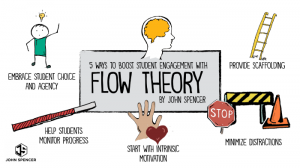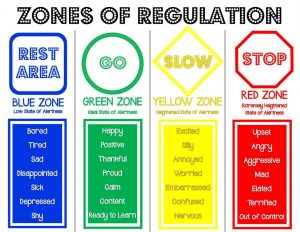Inquiry-Base Pedagogy, course 467 – Reflection
In Learning Log 1, I chose to explore inquiry-based learning through a discrepant event. The log explored how to make a homemade kazoo for a grade 4 Sound unit to explore the properties of sound. Using discrepant events can spark curiosity, generate questions, encourage planning, allow students to experiment with variables, and promote communication of results. Through the creation of a homemade Kazoo instrument, the students will learn how to observe, make predictions, ask questions, plan, investigate, discover, reflect, and share their findings. My new knowledge of inquiry-based learning will guide me in making the necessary changes to my teaching practice to support a culture of inquiry. Reflecting upon my teaching practices, there are many things that I would need to change to allow the implementation of inquiry-based learning. First, I would start with a provocation to hook the students and pique their curiosity. I would allow the students ample time to explore and play with the instruments and to avoid rushing the students as I often do. I would also offer opportunities for the students to share their ideas first with a partner and then with the class to create a community of sharing. I would make sure to write down their observations and questions and follow-up with more questions to promote deeper thinking. One of the biggest changes I will undertake is my ability to allow the students to lead or to change the direction of the inquiry. This would mean letting go of the reins and becoming more of a facilitator. This would help to create a participatory culture within the class and the students would be more driven to learn about the aspects of the unit that interest them most. The information offered in this course has brought my understanding of inquiry-based learning to the next level. I now feel that I understand the tool and strategies needed to guide inquiry.
 image by pixaby
image by pixaby
At the beginning of the course, my personal learning objectives were to learn more about how to guide the students to create meaningful questions, the various types of inquiry-based learning, and acquiring a bank of resources and ideas to help with implementing inquiry.
Questioning
I learned a lot about how to guide the students to create meaningful questions. The articles and class discussions offered advice and strategies for how to draw questions from the students such as using the “Red Light, Green Light” (UBC, Module 10), and allowing the students to choose topics that interest them, that are meaningful to them, which encourages curiosity and meaningful questioning. I learned that essential questions generate meaningful questioning and that introducing the Big Ideas of the unit and concept will encourage students to make connections to real life, and deeper thinking. I appreciated what Jeffrey D. Wilhelm states in his article, Learning to Love the Questions, that questions must:
“Matter to students now and in the future.
-Connect to student’s current lives.
-Be about quality and require students to make judgments.
-Get to the heat of the matter.
-Possess emotive force, intellectual bite, or edginess.
-Be open-ended, debatable, possible to contend.
-Be linked to data.
-Be concise and clearly stated.” (Wilhelm, 2014)
Types of inquiry models and inquiry-based learning
Through the course materials, I learned much about the types of inquiry, inquiry models used to guide the teacher. Analyzing various inquiry models allowed me to understand the process, plan effectively and understand the teacher’s, teacher-librarians, and student’s roles throughout the inquiry process. I find this to be very valuable information that will determine how I plan units with teachers and guide the students through the inquiry process. I learned many strategies for how to incorporate inquiry into existing units through the “Nudging” process. This is also very useful information if I intend on collaborating with teachers. I will be able to provide appropriate ideas to teachers for inquiry without changing every aspect of their unit of study.
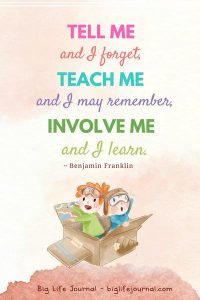 image by biglifejournal.com
image by biglifejournal.com
Bank of resources for inquiry-based learning
My third learning objective involved learning about the resources for implementing inquiry-based learning. I was provided with resources for implementing inquiry-based learning through the course materials as well as through class discussions. The following topics were very helpful in learning about resources for inquiry-based learning. Here are a few resources that I found particularly useful:
Discrepant Events and Inquiry-Based Learning, https://www.scienceworld.ca/stories/discrepant-events-and-inquiry-based-learning/
Science World, https://www.scienceworld.ca/resources/
Learning By Inquiry, https://www.learningbyinquiry.com/inquiry-based-learning-provocations/
Focused Education resources, https://k12.bcerac.ca/
Authentic First People Resources, http://www.fnesc.ca/wp/wp-content/uploads/2015/08/PUB-LFP-K-7-Authentic-Resources-for-Web.pdf
ABPBC, https://books.bc.ca/resources/for-librarians-and-educators/
Audrey Okemura (2008) [see this week’s reading Steps To Designing Inquiry-based Units,
Together for Learning, OSLA, Together for Learning from the Ontario School Librarians Association (OSLA) http://accessola2.com/data/6/rec_docs/677_OLATogetherforLearning.pdf
 image by pixaby
image by pixaby
Before taking this course, my knowledge of inquiry-based learning was limited. I had some experience teaching students about research skills and digital citizenship but not within the context of an inquiry project. I was under the impression that inquiry-based learning took only one form, that of open inquiry. My misconceptions lead me to wonder how I would be able to implement inquiry with my younger students. I wondered how they would be able to perform research, take notes, and analyze and synthesize data. Through this course, I now see that inquiry-based learning is so much more and that it can be implemented in many ways and take on many forms. I now see that inquiry varies greatly based on the students’ abilities and their grade level. My new learning will allow me to implement inquiry with many different grade levels. I feel confident in my ability to make meaningful suggestions to help the teachers with the inquiry process, to make suggestions for collaboration, to choose good resources, and to plan and organize inquiry units. This course has taught me the importance of establishing an inquiry mindset and a participatory culture throughout the school. As a teacher-librarian it is my duty to support inquiry, to encourage creativity and a sense of wonder, critical thinking, and motivation. I now have a bank of tools and strategies that I can use for inquiry projects such as using graphic organizers, doing Think-Pair-Share, Using KWL, using the Logbook, how to incorporate strategies for access for all learners, using exit slips, self and peer evaluations, scaffolding, following and understanding the inquiry models, using success criteria, and rubrics, doing checkpoints, modeling, incorporating Indigenous ways of knowing, selecting good resources, using provocations, and discrepant events. I look forward to sharing my learning with the teachers and building a culture of inquiry within the school.
- Wilhelm, J. D. (2012). Essential questions. Scholastic Instructor 122(3): 24-27.
- Wilhelm, J. D. (2014). Learning to love the questions: How essential questions promote creativity and deep learning. Knowledge Quest 42(5): 36-41.
- Fontichiaro, K. (2015a). Nudging toward inquiry – Framing inquiry with scenarios. School Library Monthly 31(3): 50-51.

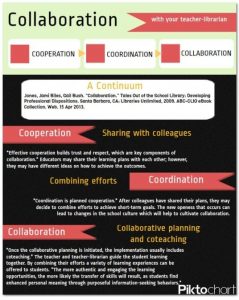
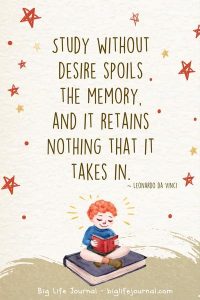 Image by biglifejournal.com
Image by biglifejournal.com